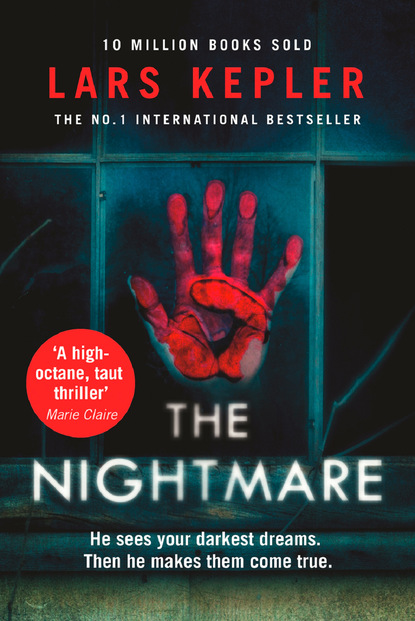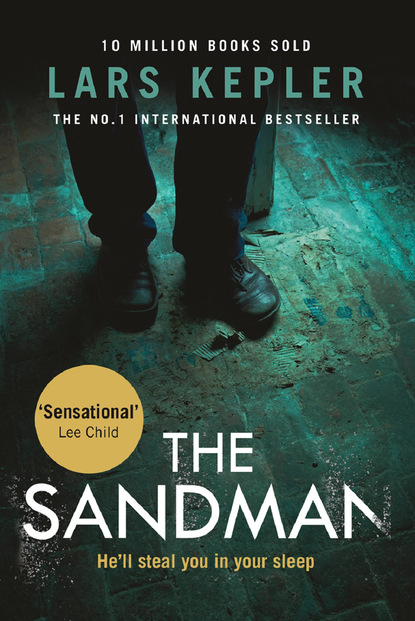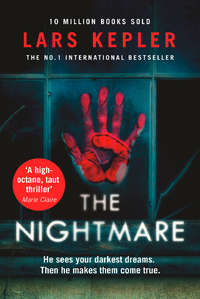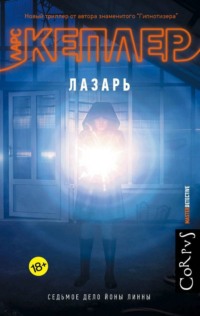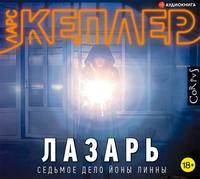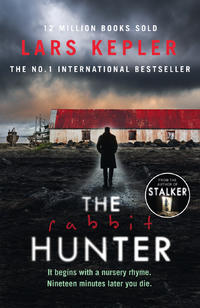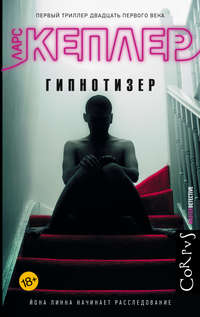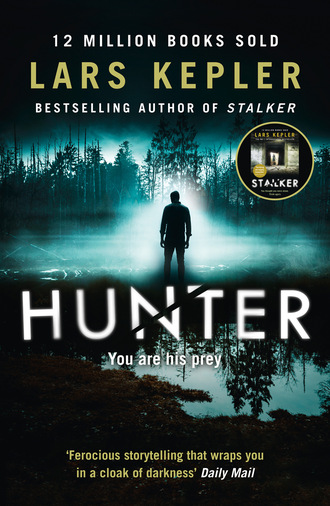
Полная версия
Hunter
The cold air helps her stay calm as she thinks through the information she has been given and formulates an initial operational strategy.
Saga gets off the highway and speeds along Vendevägen towards Djursholm with its lush greenery and sprawling villas. The turquoise glow of swimming pools shimmers between fruit trees and bushes.
She pulls onto a roundabout too quickly, and takes the first exit to the right. Before her brain has time to notice the parked car her muscles instinctively react and the bike swerves sharply. She almost falls, but manages to counteract the momentum using her bodyweight. The rear wheel slides across the road. There’s a muffled thud as she hits a large plastic dustbin before she regains control of the bike and accelerates hard.
Her heart is pumping.
Fortunately, her motorcycle has a low centre of gravity and extremely responsive steering.
That’s probably what saved her.
Saga sees big yachts out on the water as she follows the wide curve of the road through the imposing houses. She’s already leaning hard to her left, but accelerates further as she reaches the shore.
7
Saga slows down as she approaches the address she was given.
She lets the bike fall sideways onto the grass beside the road, drops her helmet and pulls on her bulletproof vest and holster.
Thirteen minutes have passed since her phone woke her up.
The alarm is shrieking inside the house.
For a moment, she wishes Detective Joona Linna was there. She has worked alongside him in all her biggest cases so far. He’s the best police officer she’s ever met.
She let him down once, but will never do it again.
They lost touch after he received his prison sentence. She would have liked to visit him, but she knows he needs to construct a new life for himself. It’s going to take a lot to win the trust of the other prisoners.
Now a Code Platinum has been declared, and Saga is on her own.
No one else from the Security Police has arrived yet.
She climbs over the gate and runs up to the main entrance of the villa. She inserts an opener into the lock, then the thin end of her lock-pick. She moves the pick slightly to the right inside the mechanism until the catch releases.
The lock opens with a dull click.
Dropping her tools on the ground she draws her Glock, releases the safety and opens the door. The sound of the howling alarm drowns out everything else.
Saga quickly checks the entrance and large hallway beyond it, then hurries back to the alarm control panel and taps in the code she memorised.
Silence sweeps through the house. It feels foreboding.
With her pistol raised and her finger on the trigger she goes through the hallway, past the staircase, and reaches a large living room. She checks behind the doors and along the wall to the right, then continues in a crouch.
One of the big windows at the back of the house has been broken. A chair is lying overturned on the floor, surrounded by sparkling fragments of glass.
Saga moves on, towards the door to the kitchen, and sees herself reflected in the glass surfaces.
Blood and fragments of skull are splattered across the floor, sofa and coffee table.
She sweeps the room with her pistol then keeps moving slowly as more and more of the kitchen comes into view. She sees white cupboards and stainless steel countertops.
She stops and listens.
She can hear a low ticking, as if someone is tapping a fingernail on a tabletop.
Aiming her gun at the door to the kitchen, Saga moves silently to one side of it, and sees a man lying on his back on the floor.
He’s been shot through his chest and both eyes.
The back of his head is gone.
A dark puddle has spread out beneath him.
His hands are lying by his sides, as if he’s sunbathing.
Saga raises her pistol again and checks the rest of the kitchen.
The curtains in front of the patio doors are swaying, billowing into the room. The rings on the curtain rod are tapping against each other.
Blood from the first shot to the man’s head has sprayed far across the floor, and been trodden about by bare feet.
The prints lead directly towards Saga.
She quickly turns and sweeps her pistol around the room before walking back towards the double doors leading to the living room.
Saga startles when, from the corner of her eye, she sees a person crawling out from their hiding place behind one of the sofas.
She spins around just as the person stands up. It’s a woman in a blue dress. Saga points her pistol between the woman’s breasts as she takes an unsteady step.
‘Hands behind your head!’ Saga calls out. ‘Get on your knees, get down on your knees!’
Keeping the pistol raised, Saga runs forward.
‘Please,’ the woman whispers, dropping the personal alarm on the floor.
She barely has time to show that her hands are empty before Saga kicks her from the side, just below her knee, so hard that both her legs are knocked out from under her and she falls to the floor with a thud, hip first, then her cheek and temple.
Saga is on her instantly. She punches her in her left kidney, then presses the pistol to the back of her head, holding her down with her right knee as she scans the room again.
‘Is there anyone else in the house?’
‘Only the gunman, he went into the kitchen,’ the woman replies, gasping for breath. ‘He fired and then went—’
‘Quiet!’ Saga interrupts.
Saga quickly rolls her onto her stomach and pulls her arms behind her. The woman submits to everything in a disconcertingly calm way. Saga handcuffs her with a zip tie, then gets to her feet and hurries into the kitchen, past the dead man.
The curtains are still billowing, blown by the wind.
Aiming the pistol ahead of her, she steps over a soot-smeared poker, checks the left-hand side of the kitchen, then moves behind the island unit towards the sliding doors.
There’s a round hole in the glass, made by a diamond cutter, and the door is open. Saga goes out onto the deck, and sweeps the lawn and flowerbeds with her pistol.
The water is still, the night silent.
Someone who broke into a house and carried out such a clean execution would never stay at the scene of the crime.
Saga goes back inside to the woman. She ties her ankles with more zip ties, but keeps one knee on the small of her back.
‘I need some answers,’ she says quietly.
‘I have nothing to do with this, I just happened to be here, I didn’t see anything,’ the woman whispers.
Saga pulls the woman’s dress down to cover her bare backside before she gets up. Soon five SUVs will pull up outside and the Security Police will pour into the house.
‘How many gunmen?’
‘Just one, I only saw one.’
‘Can you describe him?’
‘I don’t know. He had a mask over his face, I didn’t see anything, black clothes, gloves, it all happened so quickly. I thought he was going to kill me too, I thought—’
‘OK, just wait,’ Saga interrupts.
She goes over to the dead body. The man’s round face is intact enough that she has no trouble identifying him. She pulls out her phone, moves a short distance away and calls the head of the Security Police. It’s the middle of the night, but he’s been waiting for the call and answers immediately.
‘The Foreign Minister’s dead,’ she says.
8
Seven minutes later the house and grounds are swarming with members of the Security Police’s specialist unit.
For the past two years the Security Police has dramatically increased the level of protection for members of the government, with bodyguards and modern personal alarms. There are different levels of alert, but because the terrified woman managed to press both buttons on the alarm simultaneously for longer than three seconds, a Code Platinum was declared.
The crime scene has been cordoned off, three separate zones around the Greater Stockholm area are being closely monitored, and roadblocks have been set up.
Janus Mickelsen comes in and shakes Saga’s hand. He’s taking over command of the operation inside the house, and she quickly briefs him on the situation.
Janus has an almost hippie-like charm, with his strawberry-blond hair and pale ginger stubble. Saga always thinks he looks all peace and love, but she knows he used to be a professional soldier before he ended up in the Security Police. He took part in Operation Atalanta, and was stationed in the waters off Somalia.
Janus positions one agent at the door, even though they won’t be keeping the usual list of people visiting the crime scene. Under Code Platinum regulations, no one can know who is informed or aware of events and who isn’t.
Two Security Police officers walk over to the young woman Saga handcuffed. Her eyes are red from crying and her mascara has run down her temple.
One of the two men kneels down beside her and takes out a syringe. She becomes so scared that she starts to shake, but the other officer holds her tightly as the sedative is injected directly into her vein.
The woman’s cheeks turn red, she cranes her neck, her body tenses and then goes limp.
Saga watches them cut the zip ties, put an oxygen-mask over her nose and mouth, then lift the sedated woman into a body-bag and zip it closed. They carry the inert form outside to a waiting van.
The four other teams are already busy with their examination of the crime scene, scrupulously documenting everything. They’re recording finger- and shoe-prints, mapping splatter patterns, bullet-holes and firing angles, gathering biological evidence, textile fibres, strands of hair, bodily fluids, fragments of bone and brain, as well as pieces of glass and splinters of wood.
‘The minister’s wife and children are on their way home,’ Janus says. ‘Their plane lands at Arlanda at 08.15, and everything needs to be cleaned up here by then.’
The members of the unit have to gather information in one search. They won’t get another chance.
Saga goes up the creaking staircase and into the Foreign Minister’s bedroom. The room smells like sweat and urine. Leather straps hang from the four bedposts. There are bloodstains on the sheets.
A riding crop is visible on top of a chest of drawers, in the glow of a watch-winding case. Behind the glass a Rolex ticks silently next to a Breguet.
Saga wonders if the minister’s wife knew about the prostitutes.
Probably not.
Maybe she just didn’t ask.
Over the years you realise that you can put up with all sorts of cracks in your self-image and still cling to security.
Saga herself spent years in a relationship with a jazz pianist, Stefan Johansson, before he walked out on her.
He’s moved to Paris now. He plays in a band and he’s engaged.
When Stefan is on tour in Sweden, he calls her late at night and she lets him come over. She knows there’s no chance he’ll leave his fiancée for her, but has nothing against sleeping with him.
Saga knows she isn’t easy to live with. She has a fiery temper and a tendency to overreact in certain situations.
She goes back downstairs to the bullet-riddled body in the kitchen.
The glare from the lights reflects off the ridged aluminium floor. It feels like she’s standing on a silver bridge above a scene of bloodstained chaos.
Saga spends a long time looking at the dead man’s upturned palms, the yellow callus beneath his wedding ring, the sweat-stains under the arms of his shirt.
The team around her are working quickly and silently. They’re filming and cataloguing everything on an iPad using three-dimensional coordinates. Strands of hair and fabric are taped to transparent film, while tissue and skull-fragments are placed in test-tubes which are then immediately chilled.
Saga walks over to the patio door and examines the circular hole in the three layers of glass.
The alarm didn’t go off until the chair was thrown at the window, when the acoustic detectors and magnetic contacts reacted.
So the chair wasn’t thrown by the killer.
Saga thinks back to the look of terror on the woman’s face, her wounded wrists, the smell of urine.
Was she being held captive here?
Two men are covering the floor with large expanses of chilled foil, pressing it down using a wide rubber roller.
One IT specialist wraps the hard-drive from the security-camera controller in bubble-wrap, then puts it in a cool-box.
Janus is stressed. His jaw is clenched, and his freckled brow almost white and beaded with sweat.
‘OK … what do you think?’ he asks, coming over to stand beside Saga.
‘I don’t know,’ she replies. ‘The first shot to his abdomen was fired from a distance, and from a slightly strange angle.’
Blood has been oozing from the Foreign Minister’s stomach onto the floor.
A bullet leaves a ring of dirt around its entrance hole. There are two circles of powder dust on the man’s shirt.
The first two shots were from a distance, then there were two at extremely close range.
Saga bends over the body and looks at the entrance wounds in the eye-sockets, noting that there is none of the usual cratering around the openings.
‘He used a silencer,’ she whispers.
The killer must have used the kind of silencer that also muffles the flare, because there is no evidence of the percussive gases igniting. Otherwise the gas would have forced its way under the skin and left an obvious depression around the wound.
She straightens up and steps aside to make room for a forensics officer, who spreads a sheet of plastic over the dead man’s face. He presses it against the bullet-holes in an effort to gather particles from the ring of dirt, then marks the centre of the entrance holes on the plastic with a marker.
‘He was rolled onto his stomach after his death, then over onto his back again,’ Saga says.
‘What for?’ the forensics officer asks. ‘Why would—’
‘Shut up,’ Janus interrupts.
‘I want to see his back,’ Saga says.
‘Do what she says.’
They all feel like time is starting to run out. They anxiously fasten bags around the Foreign Minister’s hands, and lay out a body-bag beside him. They lift him up carefully and lay him down on his stomach in the bag. Saga looks at the wide exit wounds in his back and the messy void at the back of his head.
She stares at the floor where he was lying and sees the bullet-holes from the two final shots, then realises why the body had been rolled aside.
‘The gunman took the bullets with him.’
‘No one does that,’ Janus mutters.
‘He used a semiautomatic pistol with a silencer … Four shots fired, two of which were clearly lethal,’ she says.
A heavyset man is going around the dark-toned furniture in the living room, spraying luminol over the fabric as another forensics officer puts an armchair back into place over the depressions in the rug.
‘Get ready to pack up, everyone,’ Janus shouts, clapping his hands. ‘We’re cleaning the house in ten minutes, and the glazier and painter will be here within an hour.’
The heavyset man removes the forensic team’s floor-tiles behind them as they leave. As soon as they exit the door a team enters the house to clean it.
The killer not only took the spent cartridges with him, but also dug the bullets out of the floor and walls while the alarm was howling and the police were on their way. Not even the very best hit men do that.
They’re dealing with a perfectly executed murder, yet he left a witness. He could hardly have failed to notice someone watching him at the crime scene.
‘I’ll go and talk to the witness,’ Saga says. The woman must be involved somehow.
‘You know we’ve already got our experts there,’ Janus says.
‘I need to ask my own questions,’ Saga replies, and sets off towards her motorbike.
9
The bomb-shelter beneath Katarinaberget in Stockholm was the biggest nuclear shelter in the world when it was built at the start of the Cold War. Today the whole place, other than the section that used to house the backup generators and ventilation units, is used as a parking garage.
The machine house is a separate building, blasted into the bedrock alongside the actual shelter.
These days it is used by the Security Police.
It’s the site of the secret prison known as the Spinnhuset. The most highly classified interrogations take place deep in the bowels of the old ice pools.
It’s still early in the morning when Saga passes the Slussen junction on her motorcycle. Her sweaty leather bodysuit feels cold against her breasts. She drives in through the arched entrance next to the petrol station, and heads down into the garage. The shift in acoustics amplifies the sound of the engine.
Rubbish has gathered beneath the peeling yellow railings, and loose cables hang from the loudspeakers.
The panels covering the wide groove in the floor rumble beneath the tyres as Saga passes the shelter’s immense sliding doors, designed to protect against a pressure wave.
As she heads down the concrete ramp, her mind ponders the unsolved riddle.
Why would the woman activate the security alarm and then stay at the crime scene if she was involved in the murder?
Why would the killer leave a witness if she wasn’t involved in the murder?
The Security Police see her as a security risk whether she was involved or just happened to be in the wrong place at the wrong time.
Saga brakes carefully as she circles deeper and deeper inside the parking garage.
The woman’s identity has been verified. Her name is Sofia Stefansson, and she appears to work part-time as a prostitute, though that hasn’t been confirmed.
So far they’re relying on what she said, and the very limited documentation they’ve found in her flat.
Saga can’t rule out the possibility that Sofia has been recruited by a terrorist organisation.
Maybe she was the bait; maybe she filmed what happened in bed in order to blackmail the Foreign Minister?
But in that case, why was he killed?
Saga lets go of the brakes and swings into the lowest level.
She drives past a few parked cars, tyres squealing. Red dust swirls up around the motorcycle. She parks and walks over to a blue blast-proof door.
She swipes her ID, taps in the nine-digit code and waits a few seconds. The door opens onto an airlock.
She shows her ID again and is signed in by a guard who takes her pistol and keys. After passing through the full-body scanner she is let through the inner door of the airlock.
Jeanette Fleming sits inside the staffroom. She’s a psychologist, and one of the Security Police’s specialist interviewers. She’s a beautiful middle-aged woman, with ash-blonde hair cut in a boyish style.
Jeanette is elegantly dressed as usual. She’s eating salad from a plastic container.‘You know I’m not hitting on you, but you really are ridiculously attractive,’ she says, pushing her plastic fork into the salad. ‘I somehow forget about it every time … some sort of self-preservation instinct, I assume.’
Jeanette puts the rest of the salad in the fridge. They walk towards the lifts.
‘How’s your appeal going?’ Saga asks.
‘I’ve been turned down.’
‘Sorry to hear that.’
Jeanette waited eight years for her husband to decide he was ready to have children, and then he left her. She then spent three years trying Internet dating before applying for artificial insemination from the Swedish health service.
‘I don’t know, if they say no, I might go down to Denmark to do it … but I still want the child to speak Swedish,’ Jeanette jokes as she gets into the lift with Saga.
She presses the button for the lowest level.
‘I’ve only read the initial report on my phone,’ Saga says.
‘They were too rough on the girl. She got scared and clammed up,’ Jeanette says. ‘They had orders to go in hard.’
‘Who gave the orders?’
‘I don’t know,’ Jeanette replies.
The lift descends quickly. The light from the cage reflects off the rough rock walls, and the counterweight shimmers briefly as it glides up past them.
‘Sofia’s afraid of being hurt again. She needs someone who’ll listen to her, protect her.’
‘Who doesn’t need that?’ Saga smiles.
They reach the bottom and walk quickly down the hallway. At this depth everything seems still and grey.
Sofia Stefansson’s story has been corroborated by the discovery of a high dose of the fast-acting sedative flunitrazepam in her blood. Her wrists and ankles are wounded and there’s bruising on the inside of her thighs. Her fingerprints have been found on the chair that smashed the window.
If her story is true, then she’s a victim according to the law prohibiting the purchase of sexual services: she was assaulted and exploited by her customer, and should be allowed to speak to both the police and a psychologist.
But since she could also be involved in a serious act of terrorism, the law doesn’t matter.
‘I think it’s best if I wait in the control room to start,’ Jeanette says.
Saga taps in the code and opens the door to the former ice-store.
The lighting in the windowless room is very bright. A security camera is recording at all times.
The store was built to fit two hundred tons of ice to keep the shelter cool in case of nuclear war.
Sofia Stefansson is standing uncomfortably in the middle of the floor on a plastic sheet. Her shoulders are pulled back tightly, and her hands are tied behind her back. Her weight is held by the cable she’s hooked to, which stretches up to a plank beneath one of the beams. Her head is lowered and her lank hair hides her face.
10
Saga walks straight over to Sofia. She makes sure she’s still alive and then explains that she’s going to lower her to the ground.
Saga starts to turn the winch. Sofia gradually sinks to the floor. One of her legs starts to buckle.
‘Put your heels on the floor and take the strain,’ Saga calls.
The skin on Sofia’s ankles is torn, and Saga thinks of the bloody straps around the bedposts upstairs in the house.
First she was there, and now she’s down here.
Sofia is lying on her side on the plastic sheet. Her breathing is laboured. She looks even younger without makeup. She could be very young. Her eyelids are swollen and the bruising around her neck is more pronounced.
When Saga loosens the straps on her arms she starts to tremble and her body tenses up.
‘Don’t hurt me,’ she gasps. ‘Please, I don’t know anything.’
Saga winches the empty cable back up towards the ceiling, then pulls a chair over to Sofia.
‘My name is Saga Bauer. I’m an officer with the Security Police.’
‘No more,’ she whispers. ‘Please, I can’t bear it.’
‘Sofia, listen to me … I didn’t know they were treating you like this. I’m sorry about that, and I will be bringing it to my boss this afternoon,’ Saga says.
Sofia lifts her head off the floor. Her cheeks are smeared with tears. All her jewellery has been removed, and her brown hair is plastered to her pale face with sweat.
Saga has experienced waterboarding. It formed part of her advanced training, but she doesn’t consider it particularly effective.
She looks over at a bucket of bloody water with a towel floating in it, and thinks to herself that the only thing torture reveals is the torturer’s own secrets.
Saga gets a bottle of water and helps Sofia drink some, then gives her a piece of chocolate.
‘When can I go home?’ Sofia whispers.
‘I don’t know. We need answers to a few questions first,’ Saga says apologetically.




